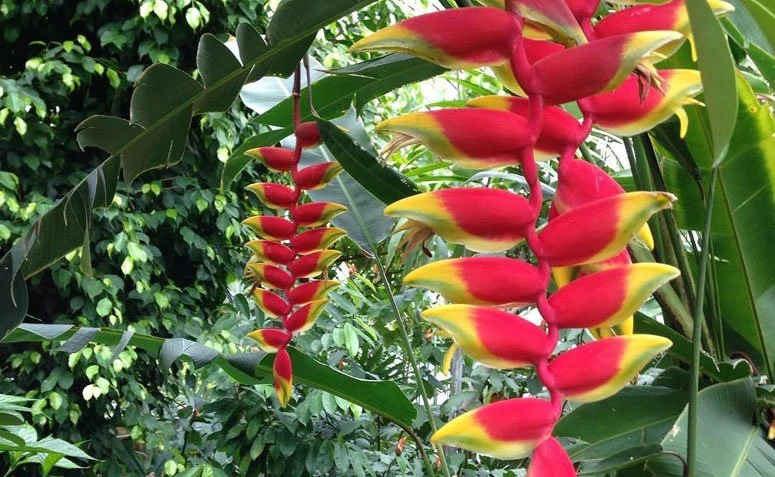Table of contents

The heliconia is a botanical genus with a wide variety of species. Plants in this family are highly decorative and stand out in any garden with their remarkable coloring, long-lasting blooms, and exuberant beauty. They usually have banana-like leaves and their flowers perfectly translate the tropical spirit.
And for you who are passionate about plants or are looking for a new and interesting species for your garden, check out a list with the types of heliconias, as well as important tips to get right the care and cultivation of this wonderful plant.
Types of Heliconias
Heliconias come in a wide variety of colors, shapes, and sizes:
- Heliconia rostrata: is also known as bananeira-do-brejo or papagaio. It has a pendulous and very ornamental inflorescence. It presents a show of colors, with a strong red coloration accompanied by a mixture of green and yellow at the tips.
- Heliconia wagneriana: popularly called caetê, produces an abundant, long-lasting, brightly colored bloom, from yellow to strong red, with variations and mixtures of tones. Its exotic beauty does not go unnoticed and draws attention in any garden.
- Heliconia collinsiana: It has a fascinating pendulous inflorescence with a red coloration. In its tips appear small yellow flowers that, with time, take on a bluish tint. It is very attractive to hummingbirds and birds.
- Heliconia bihai: is also called the firebird because of its orange-red coloring. It has an upright, ascending inflorescence with a green margin at the edges.
- Heliconia psittacorum: This plant has small inflorescences on long, erect stems. Its colors are bright and vibrant and range from yellow to red. It is one of the most popular types grown in gardens.
Heliconias are a large group of plants of tropical origin and several of them are native to Brazilian forests. For this reason, many of their varieties can be cultivated in various regions of the country.
How to care for heliconias
By following a few tricks and tips, you can grow multiple species of heliconias in your garden, check them out:
See_also: Room divider: 50 inspiring models to decorate your home- Soil: Heliconias generally appreciate a deep soil rich in organic matter.
- Luminosity: Among the different species, there are plants that can be grown both in the sun and in the shade, but to ensure greater chances of success, bet on a place with half shade.
- Watering: are tropical climate plants that like heat and humidity, so water frequently and keep the soil always moist.
- Flowering: Their inflorescences are long lasting and besides beautifully decorating the garden beds, they can be used as cut flowers to compose arrangements and decorate vases around the house.
- Pruning and maintenance: is a hardy plant that does not need pruning, but it can spread easily and may need to be controlled.
By paying attention to these simple tips, growing the heliconia is not complex and can be done easily even by first-time gardeners.
This is a plant that impresses with its beauty and richness in color, so take advantage of all this information to grow some of its many species and ensure a vibrant and amazing color for your garden.
See_also: Crocheted bedroom rug: How to decorate your space with this piece

